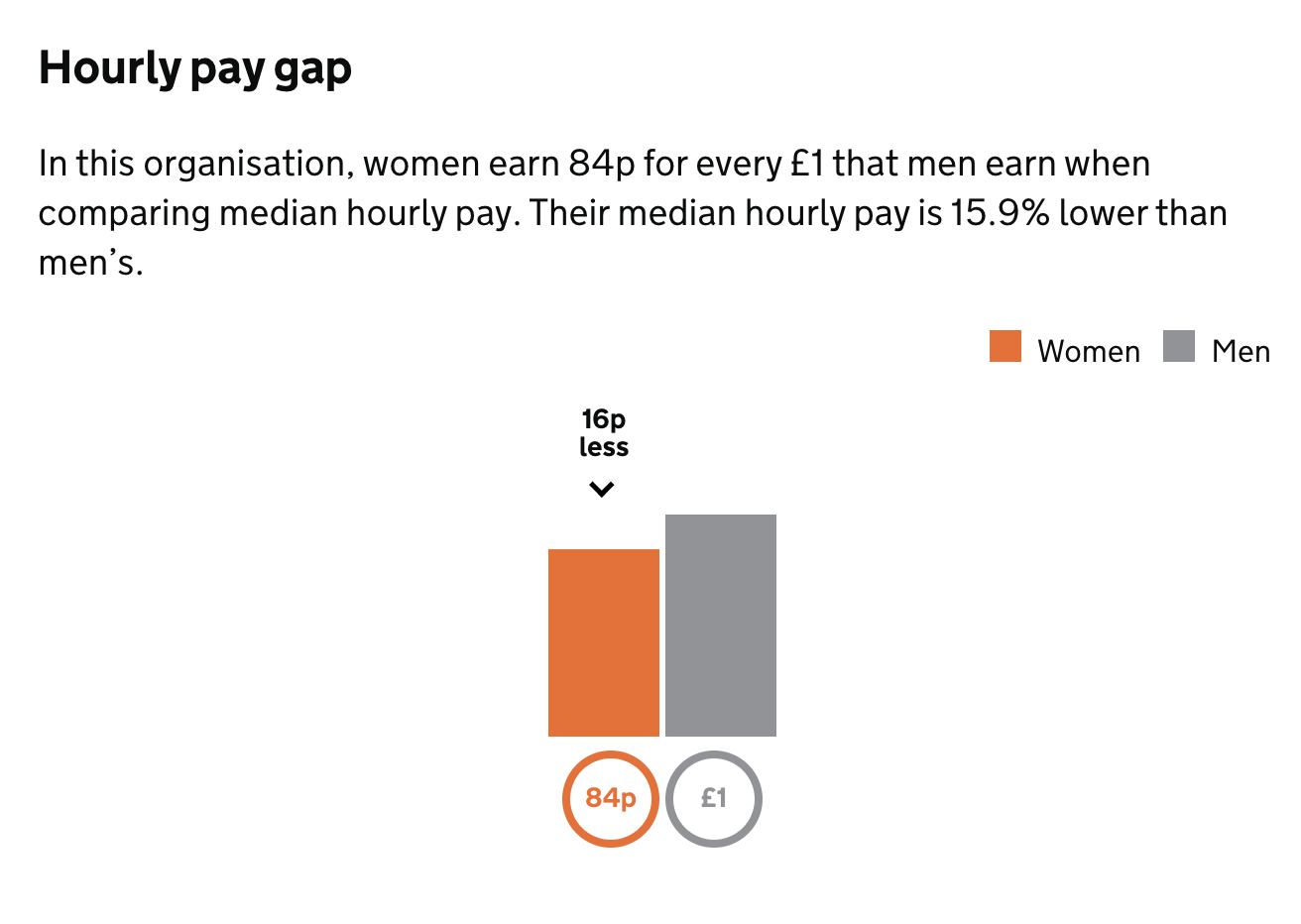Pledge Toolkit
1 - Gather, and where appropriate, publish pay statistics annually and where it is found, dismantle pay discrimination based on gender and ethnicity

The gender pay gap is calculated as the difference between average hourly earnings (excluding overtime) of men and women as a proportion of men’s average hourly earnings (excluding overtime).
Across the UK, the gender pay gap remains concerning, increasing in 2022 to15%, with the largest difference for those aged over 40 years.
There is a marked improvement in closing the pay gap for managerial and senior positions, across the UK, and within the Marketing industry this has also been see. On average female marketers working full time are paid 12.6% less than their male counterparts, according to the 2022 Marketing Week Career and Salary Survey, down from 23%.
Across 25 UK research organisations report their Gender Pay Gap, the result of which was 14.34% is very close to the national average. The research gap has slightly improved for females since the start of mandatory reporting in 2018.
More should continue to be done to ensure this trend continues.
How can you support reducing the gender pay gap in your organisation?
Step 1: Reviewing and where appropriate, publishing pay statistics for your business. The Government has provided a comprehensive guide to help organisations to complete this including:
- Finding out if you are required to report statistics
- Understanding the data you need to report
- Gathering your data
- Making your calculations
Step 2: Create an ongoing action plan to ensure the gender and ethnicity gap is reduced or removed across the board.
A Government resource with 6 practical and evidence based steps to help reduce the pay gap.
- Include multiple women in shortlists for recruitment and promotions
- Use skill-based assessment tasks in recruitment
- Use structured interviews for recruitment and promotions
- Encourage salary negotiation by showing salary ranges
- Introduce transparency to promotion, pay and reward processes
- Appoint diversity managers and/ or diversity task forces
Employees and employers can search for the results of any organisation required to publish statistics here: SEARCH
E.g. A global market research company: 
Hear from one of the pledge signees how they are tackling the Gender Pay Gap:
Useful links:
- https://www.ons.gov.uk/employmentandlabourmarket/peopleinwork/earningsandworkinghours/bulletins/genderpaygapintheuk/2022
- https://www.gov.uk/guidance/making-your-gender-pay-gap-calculations
2 - Work towards ensuring our staff are representative of the full diversity of our business locations.

The UK Market Research Industry spans all 4 corners of the country and businesses should be representative of the actual location they are based.
This is not just good practise but ensures a number of positive effects:
- It’s a fairer way to establish the make-up of your business
- Closer connection to the community that can mean a more positive societal impact
- Ensures you are bringing in local and relevant voices to projects
However, according to the recent MRS Equality, Diversity and Inclusion report, a third of all employees say that representation is not good in their organisation, and that’s higher for those in protected groups.
How can you ensure your business represents the location it is in?
- Your first port of call will be identifying what the demographics of your business locations are, and comparing that to your current employee make up.
- Identifying where the biggest differences are in any area of those demographics, will help to focus future recruitment efforts
- Continuing to review how the local community is changing, alongside the change in your own business make-up, will continue to help keep the aim on track.
There are a number of resources on the internet that provide guidance, advice and tips for ensuring diverse recruitment.
Here are a selection to get you started:
- Forbes: Recruiting for Diversity, 4 easy steps
- Business in the Community: Age-Inclusive Recruitment Toolkit
- Research Live: Tips on ensuring EDI
- Social Mobility Commission: ToolKit for Hiring
- Diversity.co.uk: Ethnic minority and women specific recruitment website
- Staff recruitment – sample onboarding template
3 - Work towards the achievement of appropriate government targets for the representation of women and minority ethnic groups at senior management and board level.

Ensuring there are diverse voices at senior leadership and board level of all organisations are imperative. They have a clear correlation with increased profitability and value creation - and are more able to attract top talent, have increased employee satisfaction and better company decision making.
The Government outlined specific targets to help drive diversity for women and ethnic minorities (2020) which were again reviewed in 2022.
Market Research organisations should strive to achieve the following targets at SLT and Board Level:
- Women target: 40% by 2025
- Ethnic minority target: 12% by 2024
We see that the inclusion of women and ethnic minorities is increasing, however how do we proactively accelerate this change?
Here are some thought starters:
- McKinsey: How to accelerate gender diversity on boards
- McKinsey: Straight talk about gender diversity in the boardroom
- EY, Parker Review: Appendix, The Directors’ ToolKit
Support networks:
Colour of Research (CORe) www.colourofresearch.org
Women in Research (WiRe) www.womeninresearch.org
4 - Improve the recruitment of a representative intake with initiatives such as ending unpaid internships and supporting school university and apprenticeship programmes.

The key to ensuring diversity is prevalent within businesses is to make changes from entry level recruitment, and then develop inclusive measures to ensure progression and success.
The Market Research Industry has historically focussed on university graduates, and in some cases from particular establishments. This has attracted a similar profile of researcher to the industry. It’s now time to widen requirements and sources for recruitment (at all levels) to ensure we can attract the diverse voices we’re looking for.
Considerations:
- Relax the requirement for a university degree from applications and consider alternative qualifications
- Ensure job descriptions are unbiased and not gender specific
- Widen the sources of applications away from the usual recruiters or websites
Supportive initiatives:
Representation in research
Since 2020, the MRS Representation in Research steering group has been working to provide guidance and resources to help research practitioners conduct more inclusive research and ensure that participation in research is equally available to all. The following resources are available to aid with this.
- How to ask gender, ethnicity, sexual orientation and physical disabilities and/or mental health conditions.
- FAQs covering a range of questions around conducting inclusive research
- Is your research representative? Use this Nat Rep Journey checklist
- A piece of research examining the commercial benefits of conducting more inclusive research
- A webinar examining work conducted on The Future of Nat Rep research study
- Sampling, Methods and Language guidelines for clients
10,000 Black Interns Initiative
- The MRS is heavily supporting this programme and so far 24 organisations from the industry are involved
- Hear first hand from Nyemba Tembo of her experiences going through the programme with Zappi
- For queries – Recruiting an Apprentice or for Apprenticeship opportunities - please contact harry@swarmgroup.org.uk at the training provider - Swarm. For general enquiries please contact Samantha.driscoll@mrs.org.uk
The People & Talent programme comprises four key workstreams, each of which have specific areas of focus to drive action and achieve real change. The workstreams are: https://www.mrs.org.uk/topic/shortages-of-talent

“I knew I didn’t want to go to university and I’m really glad I made that choice. I’ve learned so much already on the apprenticeship – at university you have to wait years to transfer your learning into a practical situation, whereas I’m putting what Swarm, our training provider, teaches me immediately into practice in my work. And our employers benefit too from the different experiences and viewpoints we all bring to our teams. It’s a win-win.”
Abbie Bradley, Market Research Apprentice, Ipsos UK
Diverse Recruitment Sources
5 - Create safe places to work for all, committing to: Create accessible environments in our offices for all staff and visitors; Develop a proactive culture that supports whistle blowing; Train staff to recognise those who need help for stress or mental health and wellbeing and create appropriate support systems.

Helping employees feel safe and comfortable at work is fundamental to good business practices and ensures all voices feel supported and empowered. Creating an ongoing safe environment drives increased employee satisfaction, longer tenures and overall inclusion.
Create accessible environments in our offices for all staff and visitors
- Utilise this Premises Accessibility Checklist to ensure your buildings are fully accessible for everyone
- Additional resources and training on accessibility design from CAE
Develop a proactive culture that supports whistle blowing
- Whistleblowing is the act of disclosing information about wrongdoing in the workplace.
- The MRS has a comprehensive guide to Whistleblowing as part of it’s Safeguarding series
- Ensuring your company has a Whistleblowing policy, that is easily accessible and is discussed openly will ensure employees feel comfortable implementing it if needed.
Train staff to recognise those who need help for stress or mental health and wellbeing and create appropriate support systems
There are a number of ways to support employee wellbeing within the workplace, all which help to create a more positive environment that is pleasant and engaging to work in.
These can be thought about in 3 different ways:
1. Training advocates to have the knowledge and resources in place to support employees. Examples such as:
2. Basic changes to everyday life
- Using Pronouns and why it’s important
- CORe mentoring service
- Interrupting bias’
- 3 Tips on kindness from Michael Brown - Managing Partner @ UM
- Experiences of Intersectionality- LGBTQ+ and Ethnic Minorities (MRSPride x CORe)
3. The importance of Allyship in the workplace
- Guidelines for Being Strong White Allies
- Be a Better Ally
- Why allyship is important
- Forming Alliances
Useful links
Contact us to get involved:
Get the latest MRS news
Our newsletters cover the latest MRS events, policy updates and research news.














